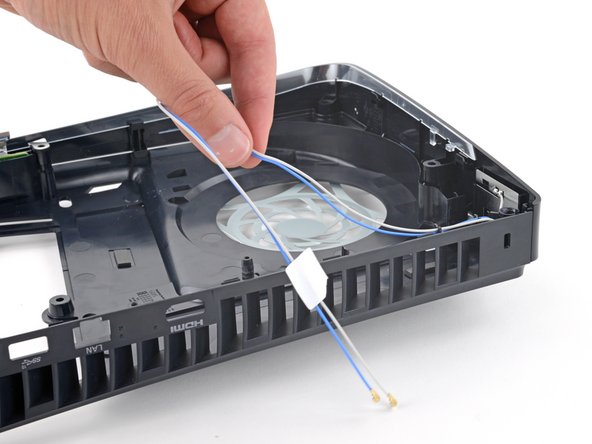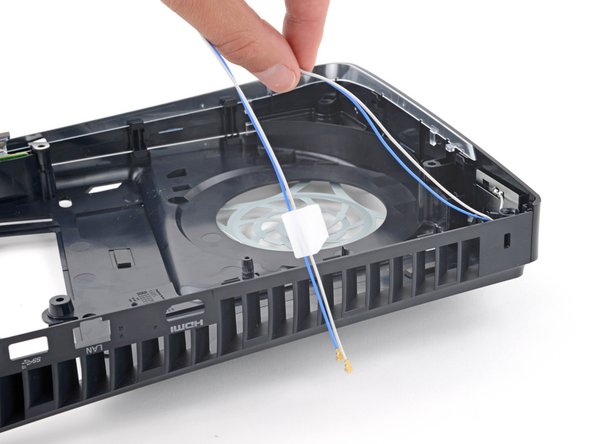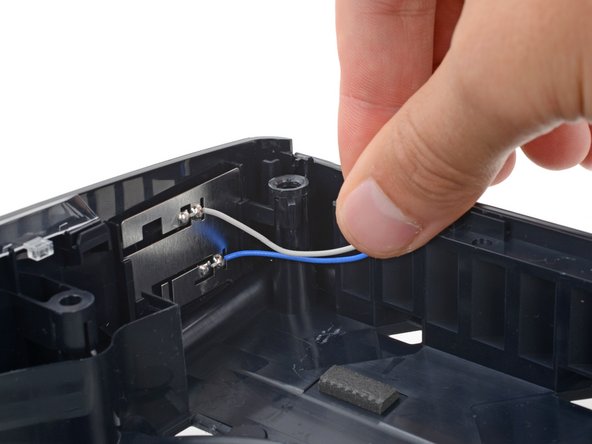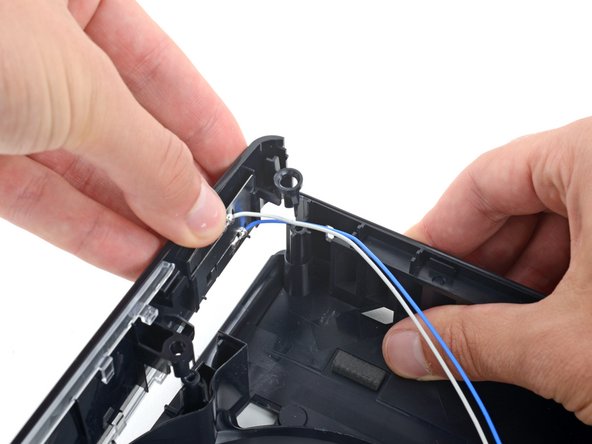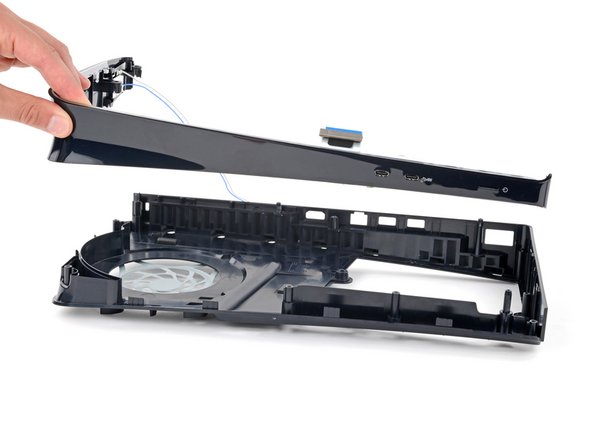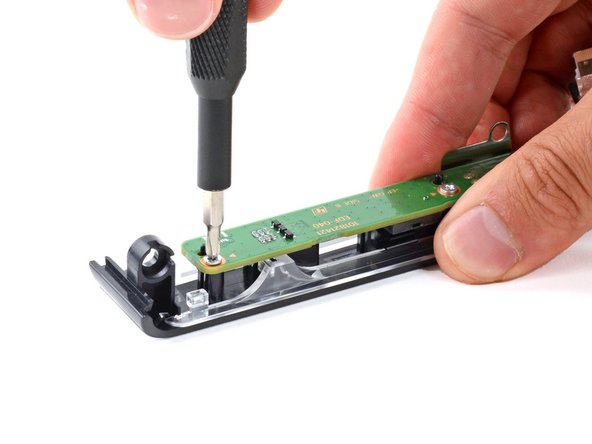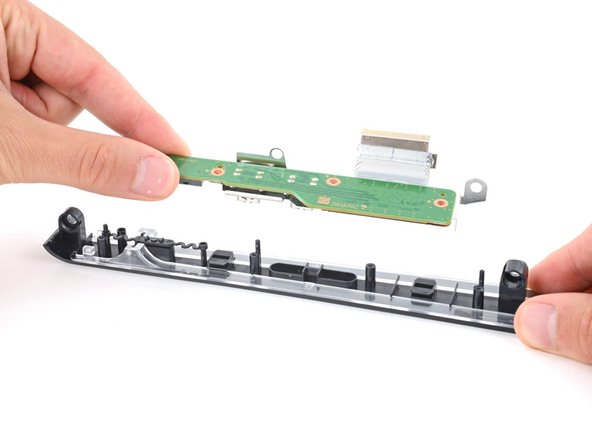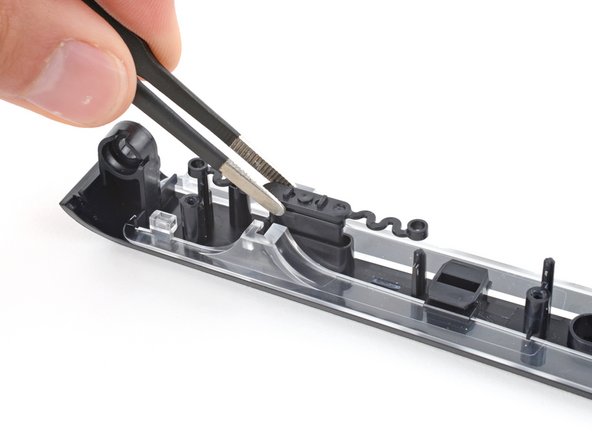PlayStation 5 Pro USB-C Board Replacement Guide: Step-by-Step DIY Tutorial
Duration: 45 minutes
Steps: 34 Steps
Get ready to tackle the USB-C board replacement on your PlayStation 5 Pro! This nifty little board houses the USB‑C ports and the power button. If you’re finding that your controllers just won’t connect via USB‑C, the connection feels as loose as a sock in a tumble dryer, or if that power button is giving you a fighting chance at sticking around, it might be time to swap out the USB-C board. Let’s get to it!
Step 1
Alright, champ! Before you dive into this repair, take a moment to breathe, stretch those fingers, and get ready to rock this fix! You’ve got this!
– First things first, power down your PlayStation and make sure to unplug all those cables and accessories. We want to keep it safe and sound!
– Next, let’s take off any stands that are holding your console up and gently lay it on its right side. It’s time for some quality repair action!
Step 2
Each console cover is held in place by hooks along the back edge and clips along the front edge.
You’ll hear a satisfying *pop* as each clip releases.
– To pop off the cover, just give a good tug at the front edge to loosen those clips.
– Cover off!
Step 3
– Follow the same steps to pop off the three other covers, and you’re almost there!
– When it’s time to put a cover back on, just line up those little hooks with their cozy cutouts along the rear edge. Give the front edge a good little push to snap the clips back into place, and voilà! You’re all set to go!
Step 4
– Grab your trusty T8 Torx Security screwdriver and carefully remove the two 21.5mm-long screws that hold the power supply in place. You got this!
– Now, flip that PlayStation over and let’s get started on the next step.
Step 5
Stay organized and keep track of each screw, making sure it ends up back where it started – it’s crucial for a smooth repair process!
– Let’s get started! Use a trusty Phillips screwdriver to carefully remove the 17.1mm-long screw that’s holding the expansion slot cover in place.
Step 6
– Time to show that expansion slot cover who’s boss! Give it a little lift near the notch by the screw hole using your fingers, and then give it a little wave goodbye as you remove it.
Step 7
The cover is held in place with a bit of light adhesive magic.
Step 9
If you’re facing a little resistance, give those cables a gentle tug just above the connector head – they might just need a friendly nudge!
– Grab the fan cables’ white connector head firmly and gently pull it straight up and out of its socket – easy does it!
– When you’re putting everything back together, line up the connector with its socket and use the flat end of a spudger to push down on the edges until it clicks into place.
Tools Used
Step 10
– Time to get started! Use a T8 Torx Security screwdriver to remove the four screws that hold the fan in place:
– First, you’ll find one 31.7 mm-long screw – carefully remove it
– Next up, there are two 21.5 mm-long screws – take those out as well
– Last but not least, remove the one 11.5 mm-long screw to completely free the fan
Step 11
Now’s the perfect time to give that fan a little TLC. Grab a clean cloth and some compressed air, and gently blow away any dust or dirt that’s built up. Your device will thank you!
Step 12
Don’t let those little warranty stickers scare you! In the U.S., they’re totally against the law, thanks to the Magnuson–Moss Warranty Act. So, relax and keep on fixing! Warranty rules are different depending on where you are, so always check your local laws. If you need help navigating any of this, you can always schedule a repair.
– A sneaky tamper-evident sticker is hiding one of the screws on the right side of the inner shell. Time to get it out of the way!
– Grab your trusty tweezers and carefully peel up the sticker to reveal the screw underneath. You’re making great progress!
Step 13
– Use your fingers to carefully release the plastic grille near the fan recess by gently prying it away.
Step 14
– Grab your trusty T8 Torx Security screwdriver and let’s tackle those 10 screws holding down the right-side inner shell:
– Start off with four screws that are 18.8 mm long – they’re just waiting for you!
– Next up, two screws that are slightly shorter at 18.6 mm. Don’t worry, they won’t bite!
– Finally, finish strong with four screws that stretch out to a solid 31.7 mm long. You’ve got this!
Step 15
– Time to get that shell off! Carefully lift the right-side inner shell straight up, and voila – it’s removed!
Step 16
If you’re stuck, give the connector a gentle wiggle side-to-side to loosen it up.
– Grab those angled tweezers and give a gentle but firm squeeze on the sides of the CMOS board connector. Keep the tweezers nice and close to the connector to really nail that grip.
– Now, with confidence, pull the connector straight up and out of its socket to disconnect it. You’re on the right track!
Tools Used
Step 17
– Gently lift the CMOS board off the small metal nubs with your fingers and pull it towards the center of your console – it’s like a little puzzle piece coming out. Once it’s removed, you’re one step closer to getting your device up and running.
– If your new board doesn’t come with a cable, don’t worry, just transfer the original cable to your replacement board. It’s an easy swap, and you’ll be back in business in no time.
Step 18
– Time to get started! Use a spudger to carefully pry the metal neck of one of the antenna cable’s coaxial connectors straight up – this will help you disconnect it.
– Now, repeat the process for the other antenna cable. You got this!
– When you’re putting everything back together:
– Take a look at the markings on the board and make sure to reconnect the antenna cables to the right sockets. The blue cable goes to the socket marked RB, and the white cable goes to the one marked RW.
– To reconnect a cable, place the metal connector head over its socket and gently press down with the flat end of a spudger until it clicks into place. Don’t force it – if it’s not going in, try repositioning the connector and trying again. If you need help, you can always schedule a repair
Tools Used
Step 20
– Let’s gently guide those antenna cables out of their clips on the metal shield. Use your fingers to help them along.
– Now, give those cables a little nudge. Move them over to the side of your PlayStation so they’re out of our way.
Step 21
Thermal paste is what keeps things from getting too toasty! It’s like a little adhesive that sticks the bottom heat sink fins (those closest to the power button) to the metal shield. Depending on your device’s age and how the thermal paste has held up over time, you might need to give the heat sink a bit of muscle to separate it. Just remember, you’re doing great and if things get tricky, you can always schedule a repair!
– Time to get this repair started! Insert the flat end of a spudger under the bend in the copper pipes, near the heat sink’s bottom edge. Take your time and be gentle.
– Now, use your trusty spudger to carefully pry up the heat sink. Apply steady pressure to loosen it from the thermal paste – it might take a little elbow grease, but you’ve got this!
– If the heat sink is being stubborn and doesn’t fully separate, don’t worry! Just use your spudger to pry up the bottom edge on the other side of the metal fins. You’re making great progress!
Tools Used
Step 22
Be careful not to grab those sharp, metal fins on the heat sink – they’re not exactly friendly to your fingers!
Before you start scraping off that old thermal paste, take a quick peek at where it’s currently living on the metal shield and make a mental note of how much is there. This will give you a solid idea of how much new paste to apply when you’re putting everything back together. If you’re feeling unsure, don’t worry – you’ve got this! And if you need help, you can always schedule a repair
– Grab that heat sink by its copper pipes and give it a gentle lift to remove it.
– During reassembly:
– Use the flat end of a spudger to scrape up any lingering thermal paste. Just like cleaning out the fridge, we want to get rid of the old stuff!
– Now, get rid of the rest of that thermal paste residue with some high-concentration (>90%) isopropyl alcohol and a microfiber cloth. It’s like a spa day for your tech!
– Apply some fresh thermal paste right where the old paste was. A new coat for a new lease on life!
– Push the heat sink back into place, making sure it’s nice and snug. Don’t worry, we’ve got your back!
Tools Used
Step 23
– Let’s get started by removing the six screws using a T8 Torx Security screwdriver – it’s time to take apart your device!
– First, locate the 11.5 mm-long black screw that’s holding the main board assembly in place, and gently remove it.
– Next, find the 28.7 mm-long screw that’s securing the interconnect cable cover, and carefully take it out.
– Now, remove the four 7.5 mm-long screws that are also holding the interconnect cable cover – you’re making great progress!
Step 24
– Pop off the interconnect cable cover.
Step 25
– Grab your trusty spudger and gently push down on that metal bar nestled on the interconnect cable socket.
– While keeping the metal bar pressed down, use your fingers or some handy tweezers to grab that nifty plastic pull tab and smoothly slide the cable right out of its cozy socket.
– When it’s time to put everything back together, simply pop the interconnect cable into the socket until you hear it snap into place. Easy peasy!
Tools Used
Step 26
The power supply is snugly attached to the bottom of the main board assembly via some trusty metal prongs that plug right into the bottom left corner, just waiting to bring your device back to life.
As you lift the assembly, don’t be surprised if your PlayStation’s plastic housing shows a little bit of flexibility—it’s just getting into the groove with you!
– Gently lift the bottom left corner of the main board assembly off its gray plastic post. Keep it elevated for the next step—you’re doing great!
Step 27
You’ll need to give it a good push to separate the two. It’s like a stubborn friend who needs a little encouragement.
– Get a good grip on the main board assembly with one hand – you’ve got this!
– With your other hand, carefully slip your finger between the assembly and the power supply to get ready for the separation.
– Gently push down on the power supply while lifting the assembly – it’s like a little dance, and they should come apart nicely.
– When you’re putting everything back together, make sure to press down firmly on the bottom left corner of the main board assembly to secure it to the power supply. If you need help, you can always schedule a repair
Step 28
Those copper heat pipes and fins are pretty sensitive, so be gentle when handling the main board assembly. Don’t grab them directly, they can be easily damaged. If you’re not sure about anything, you can always schedule a repair.
Be careful not to trap the interconnect cable under the main board assembly as you lower it into place. Take your time and make sure everything is properly aligned before securing it.
– Hold that plastic housing steady with one hand.
– With your free hand, grab the top edge of the main board assembly and lift it out of the housing.
– Reassembly time:
– Place the assembly back into its spot, making sure its prongs fit into the sockets on the power supply and the two cutouts align with their posts.
Step 29
– Let’s get those antennas out of their little clips. Gently pull both cables up and away from the rear edge of your PlayStation.
– Now, it’s time to put those cables back in their spots. Just like a puzzle piece, slide them back into their clips on the rear edge of the frame.
Step 30
– Gently push both antenna cables downwards and out from under their clip, located at the top right corner of the plastic housing.
Step 31
– Grab the right side of the plastic housing with one hand. Hold it tight, like you’re giving it a firm handshake!
– Now, with your other hand, give that top edge of the front trim a gentle lift. It’s like giving it a little high five to release those three plastic clips.
– When you’re putting everything back together, just push the front trim back onto the frame. The clips will snap right back into place, no problem!
Step 32
– Now, let’s lift that front trim straight up and give it a gentle farewell. Time to say goodbye!
Step 33
– Make sure the front trim is secured against your workspace, so the USB-C board screws are looking up.
– Grab your Phillips screwdriver and remove those four 6.6 mm-long screws holding the board in place.
Step 34
– To put your device back together, just follow these steps in reverse.
– Remember to recycle your e-waste at an R2 or e-Stewards certified recycler.
– Trouble with the repair? Try some basic troubleshooting, or check out our Answers community for help.
– Cancel: I did not finish this guide.
–













































































